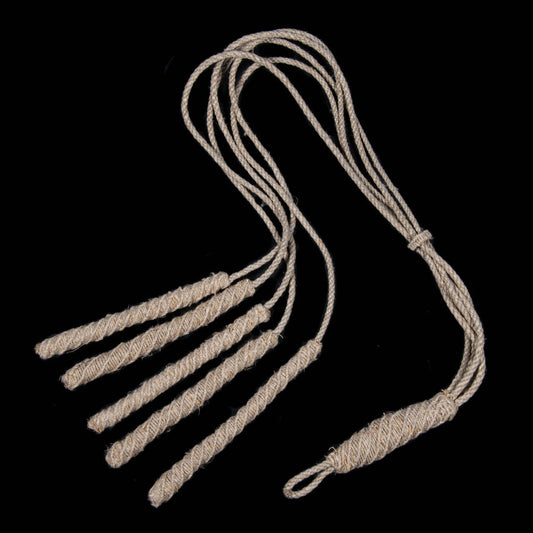Discipline and the Cilice: Instruments of Christian Penance
Within certain religious communities, particularly contemplative orders, practices of bodily mortification were historically integrated into spiritual life. Flagellation, corporal penance, and the use of instruments of penance followed an ascetic logic aimed at purification, expiation, and the imitation of the Passion of Christ. These practices belong to a clearly defined religious context, specific to particular periods and monastic traditions.
The Discipline: Ritual Flagellation within the Community
Among these practices was the use of the discipline, an instrument composed of cords or thongs, employed during ritual acts of flagellation. In certain orders, notably within Carmelite communities, the discipline was administered at fixed liturgical times: on Friday evenings during the Miserere, on designated days of Lent, and during the period from Holy Thursday to Holy Saturday. These sessions could at times result in bleeding, which was accepted as an integral aspect of penitential practice.
Authorization and Religious Hierarchy
The use of the discipline or the cilice was never a matter of individual initiative. It was subject to strict regulation within the community. Religious members were required to obtain prior authorization from their superiors, who acted as guardians of the monastic rule and of the spiritual balance of the community.
Penance, Transgression, and Expiation
Requests for penitential practices were often connected to breaches of monastic discipline, such as failures in silence, obedience, or poverty. The use of instruments of mortification thus formed part of a voluntary act of expiation, intended to restore moral order and spiritual integrity.
Spiritual Responsibility and Discernment
Religious authority played a central role in assessing the legitimacy of the requested penance. Superiors ensured that mortification did not become excessive, dangerous, or detached from its spiritual purpose. This oversight reflects an effort to situate ascetic practices within a collective and thoughtfully regulated framework.
The Cilice: Bodily Mortification and Discreet Asceticism
The cilice constituted another widely used instrument of penance. Worn beneath the clothing, it typically took the form of a hair shirt, metal chain, or spiked belt. Its purpose was to produce continuous discomfort or pain, understood as a means of spiritual vigilance and resistance to worldly temptation.
Historical Roots and Ascetic Traditions
Practices of flagellation and bodily mortification have their origins in the early centuries of Christian monasticism. Drawing upon ancient ascetic traditions, they sought to detach the individual from corporeal concerns in order to attain spiritual elevation and closer proximity to the divine.
Flagellation as an Extreme Form of Discipline
Religious flagellation was regarded as an extreme form of bodily discipline. The voluntary endurance of physical suffering was interpreted as an act of purification, allowing the believer to participate symbolically in the sufferings of Christ and to deepen spiritual commitment.
Penance, Expiation, and Controversy
While some practitioners believed that such practices strengthened their spiritual bond with God, they were also the subject of internal ecclesiastical debate and controversy. Questions of legitimacy, intensity, and spiritual intent were repeatedly examined, underscoring the complexity of these ascetic traditions.
Today, the discipline and the cilice are preserved as material witnesses to historical spiritual practices. They provide valuable insight into extreme expressions of Christian devotion, monastic asceticism, and penitential culture in past centuries.





















